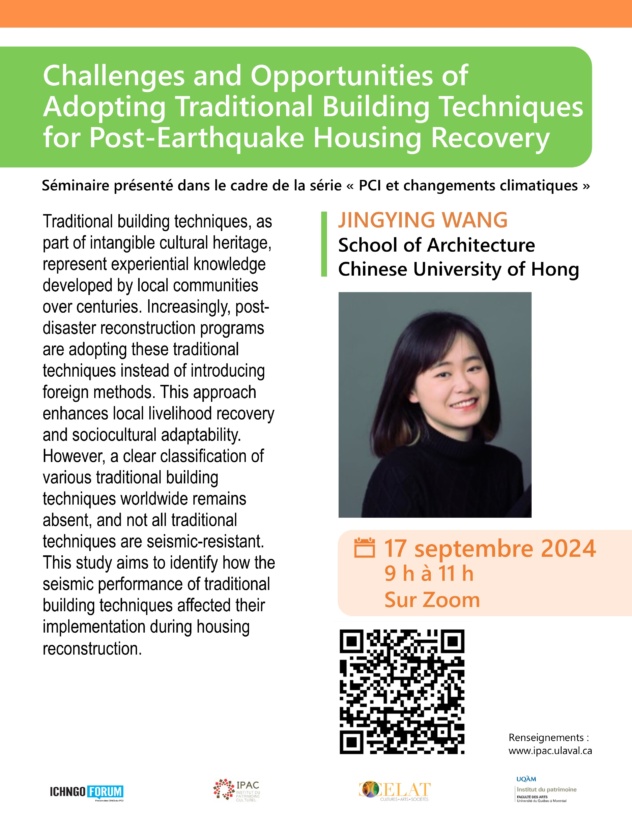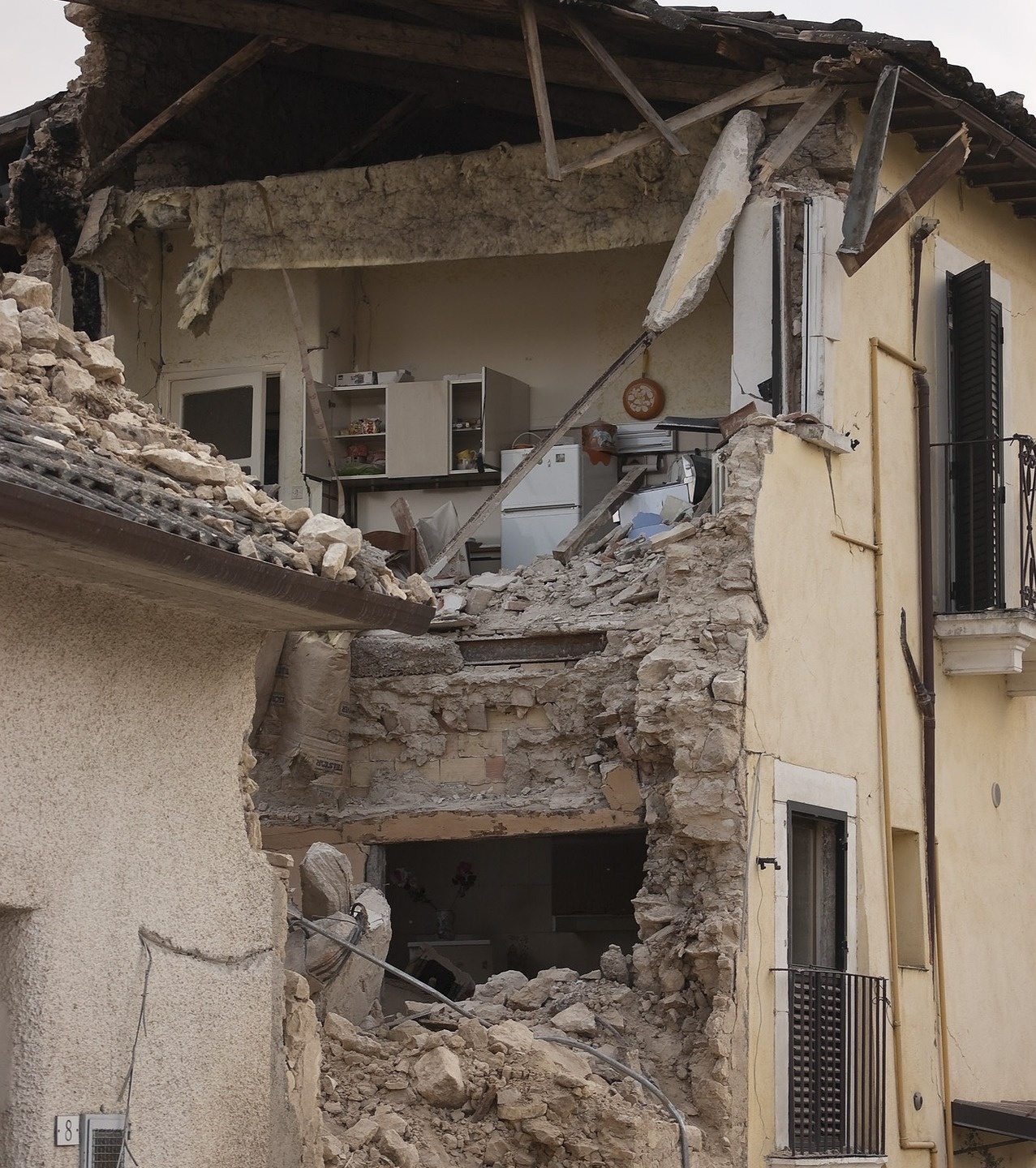Vous êtes invité-es à assister au séminaire international « Challenges and Opportunities of Adopting Traditional Building Techniques for Post-Earthquake Housing Recovery » qu’offrira en anglais Jingying Wang (School of Architecture, Chinese University of Hong Kong) ce mardi 17 septembre, de 9 h à 11 h (heure du Québec), sur Zoom. L’activité, qui s’inscrit dans le cadre des travaux du Groupe de travail sur le PCI, le changement climatique et l’environnement et de la série « PCI et changements climatiques », vous est présentée par l’Institut du patrimoine culturel, le Centre de recherche Cultures – Arts – Sociétés et l’Institut du patrimoine de l’UQAM.
Lien de la réunion Zoom : https://us02web.zoom.us/j/82841876119?pwd=OVVDVjNVTWtzSlZicW4zR0dwbGVZdz09
ID of Meeting : 828 4187 6119
Secret Code : 812631

Résumé de la présentation
« Traditional building techniques, as part of intangible cultural heritage, represent experiential knowledge developed by local communities over centuries. Increasingly, post-disaster reconstruction programs are adopting these traditional techniques instead of introducing foreign methods. This approach enhances local livelihood recovery and sociocultural adaptability. However, a clear classification of various traditional building techniques worldwide remains absent, and not all traditional techniques are seismic-resistant. This study aims to identify how the seismic performance of traditional building techniques affected their implementation during housing reconstruction. A classification system was drawn based on the review of the World Housing Encyclopedia, and a multiple case study was conducted on four countries – Colombia, Pakistan, Peru, and China. All case studies adopted a decentralized reconstruction approach with active participation from NGOs and academia. However, different challenges in terms of technical modifications and social mobilizations were observed. Earthquake resistant techniques mainly required standardization of structural components to ensure quicker reconstruction, whereas non-earthquake resistant techniques required introduction of new structural components as seismic retrofitting. Consequently, the former faced fewer difficulties in gaining approval from governments for reconstruction, while the latter encountered lower confidence from affected communities, higher suspicion of governments, and greater risks of technology transfer. By examining traditional building techniques in detail, this study highlights the variety of intangible cultural heritage and the necessity for tailor-made solutions during implementation. »


